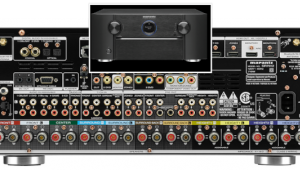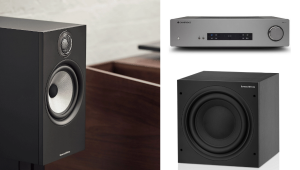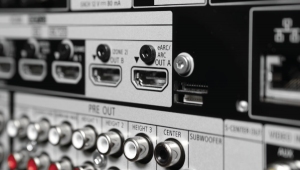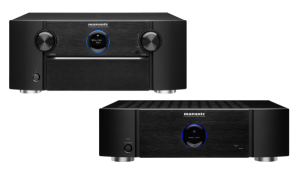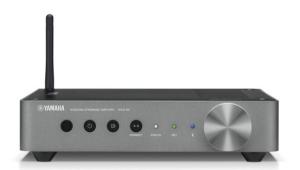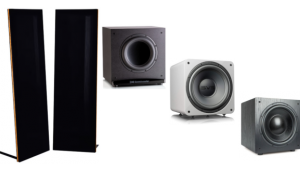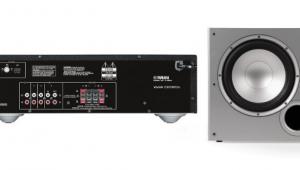Sharp Quattron, Hard of Hearing, Kuro Spoilage

I was listening to Leo Laporte's recent "Tech Guy" podcast on which you discussed Sharp televisions and their new Quattron technology, which uses four colors (red, green, blue, and yellow). I agree with your comments that the goal should be to accurately reproduce the original colors. Is this technology akin to inkjet printers using more than three inks to more accurately reproduce colors? Do you know if Sharp is trying to create "extra" color or using a new technique to reproduce color content that isn't being properly generated?
Alan Goldstein
According to Sharp's website, "For the very first time, yellow has been added to the conventional red, green, and blue color filter, enabling more colors to be displayed. Introducing never-before-seen colors...Sharp is redefining the way we see LED LCD TV." This sounds like they're trying to increase the color gamut, which is not desirable in my book.
As you point out, the goal is to reproduce the colors of the source material as accurately as possible, which means that the display should use the same range of colors that was used to create the content. Our display reviews clearly reveal that it's entirely possible to accurately reproduce the standard color gamut with red, green, and blue, so there is no need to introduce yellow into the system, as long as the display combines red and green to produce the correct yellow.
What?!
I am looking for a way to help my 82-year-old father, who has trouble hearing TV dialog. Connecting Bose noise-canceling headphones to his Samsung LCD TV works better than all other solutions he has tried so far, but any background noise and music in the soundtrack still distracts him from the dialog. Unlike most of us who enjoy the surround-sound experience (including my mom), he would be thrilled just to hear a show's dialog.
The only thing I can think of is to somehow route the center channel from an A/V receiver to his headphones. However, I am not sure if or how this could be done. Can you suggest a solution?
Steve Albright
The most obvious solution is to boost the center-channel level in the A/V receiver and/or cut the levels of the other channels. However, this only affects the speakers, not the AVR's headphone output, so others listening to the speakers (including your mom) would hear an unbalanced sound.
I recently found the perfect solution to your problemthe Smyth Realiser A8, which I profile in my Ultimate Gear blog on UltimateAVmag.com. The Realiser simulates surround sound in regular headphones, and it offers independent level controls for each channel. Using this device, your father could boost the level of the center channel and/or cut the level of the other channels in the headphones without affecting the balance of sound in the speakers. The Realiser has only analog inputs, so your AVR needs multichannel analog outputs to work with it, but this is very common.
The only problem is costthe Realiser goes for $3360, which includes an excellent set of headphones. However, I know of no other solution to your problem that also allows others to listen to the speakers without unbalancing the sound.
Expiration Date
The Pioneer Kuro seems to be the standard that many in the media use for comparison. On a whim, I went looking for one to purchase, and they're still out there! Brand new, apparently, and from dealers I know. Of course, they've been sitting in a warehouse somewhere for years, which brings my question: Are there any concerns with purchasing one of these Kuros that have been stored so long, or can I expect the same longevity and performance as if it were fresh off the line? I'd like my first HDTV purchase to be an intelligent one. I'd like to know if you'd recommend purchasing a Kuro, or would a more-recently manufactured HDTV be a better investment?
Straum Yorton
Plasma TVs have no expiration date like milk! And in most cases, I doubt the Kuros you've found have been sitting around for years, since Pioneer officially discontinued selling them only in March of this year. Of course, they could be older than 9G (the last generation), but even so, it shouldn't be a problem.
Having said that, I would be a bit careful. Kuros are no longer in production, so if there is a defect, it might not be easily repaired or exchanged. Also, if it's been stored in a very high-temperature environment for a long time, there could be some discoloration in the casing or one of the screen laminates. Maybe it's been shipped around a lot, in which case, something might have jostled loose during transport. If you can buy one from a dealer you know, have them take the unit you intend to buy out of the box at the store, turn it on, and show something on it to make sure it works and looks okay. If so, I would have no hesitation in buying a Kuro at this pointat least a 9G model, which, in my opinion, still produces the best flat-panel picture money can buy.
If you have a home-theater question, please send it to scott.wilkinson@sorc.com.
